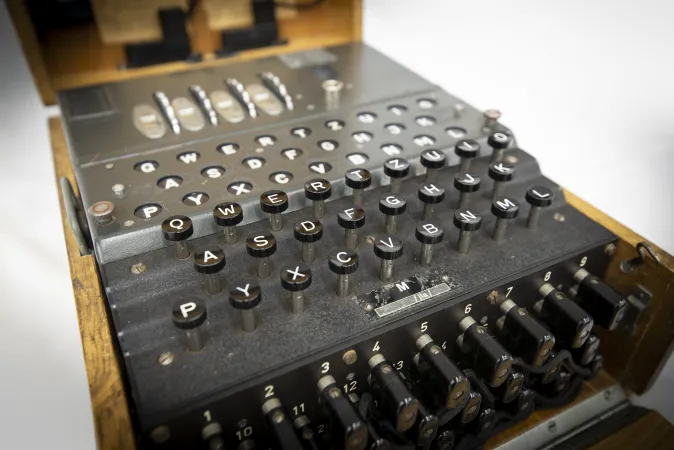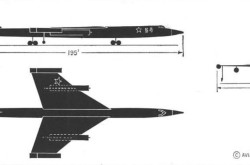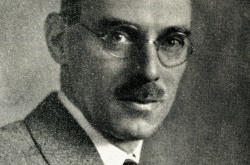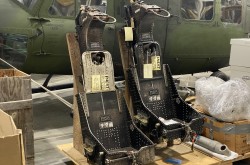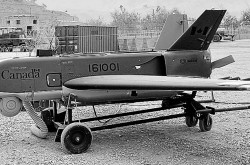Making sense of an Enigma

When an exhibition team at the Canada Science and Technology Museum started work with the Communications Security Establishment (CSE) on Cipher | Decipher — a travelling exhibition exploring the past and present of encryption — we knew it had to include an Enigma machine.
Not only is the Enigma cipher machine historically significant, but thanks to a role alongside Benedict Cumberbatch and Keira Knightley in The Imitation Game, it’s as close to a household name as an encryption device can get. Important and well known; Enigma is clearly a star artifact!
Used by Germany to protect top-secret communications during the Second World War (1939-1945), Enigma’s ciphers were strong — but not impossible to crack. Building on Polish work, Britain developed methods and machines that helped to decipher many encrypted German messages.
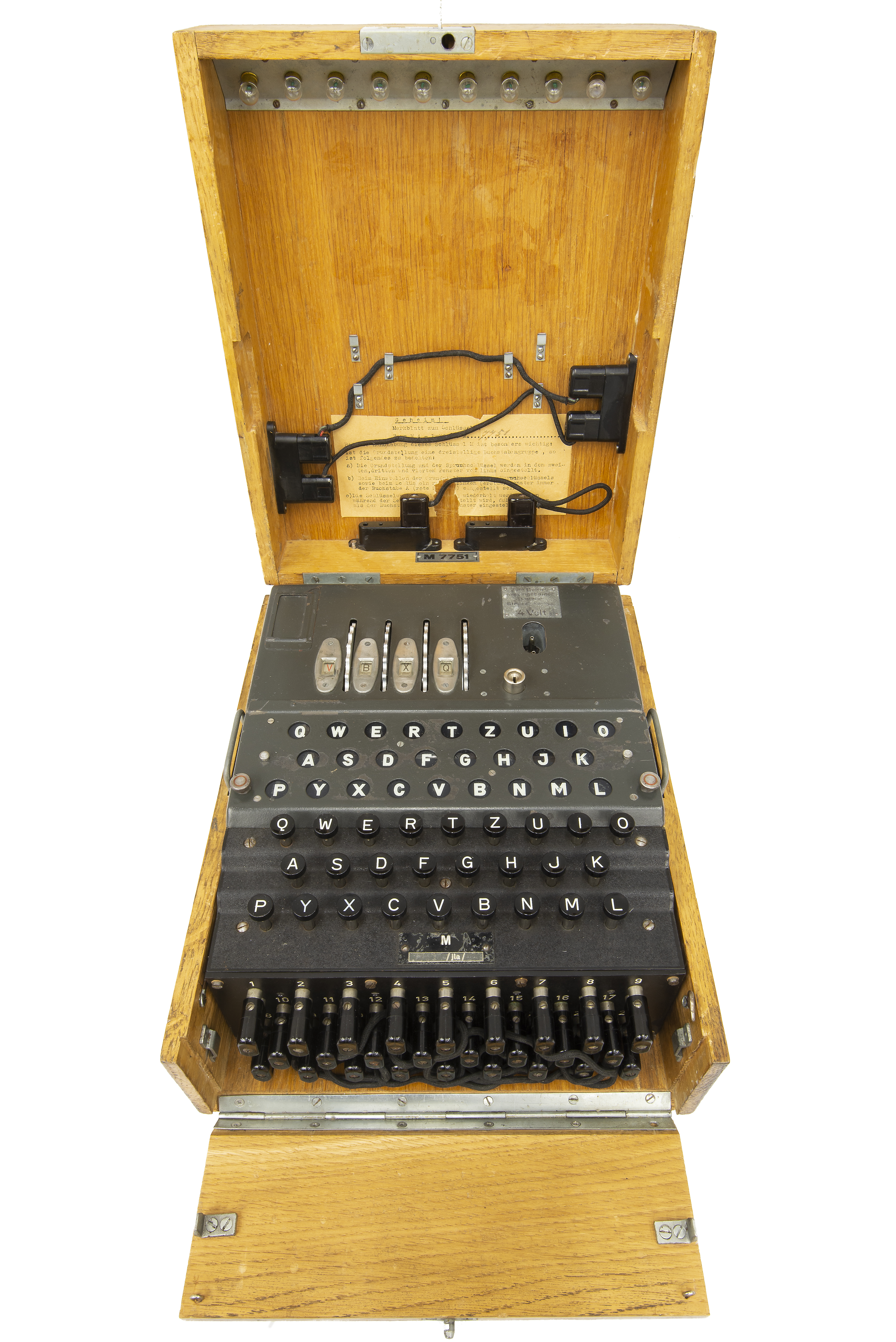
The Engima machine, on loan from the Communications Security Establishment, on display in the Cipher|Decipher exhibition.
The Enigma machine works by scrambling messages one letter at a time, using complex electrical wiring. The operator starts an electric current moving through the machine by pressing a key. The current’s path is first rerouted at the plugboard, which consists of 26 (think A to Z) electrical sockets. Wires connect different sockets, swapping one letter for another.

The Enigma plugboard.
From the plugboard, the electrical current moves to the rotors, which are discs with 26 contact points on each side (again, A to Z). Within each rotor, internal wiring connects the contact points on either side, so the electrical signal enters the rotor as one letter and leaves as another. Rotors were identified by number; each number had identical wiring. The German army used machines that had five possible rotors, and used three at a time. The navy used machines with eight possible rotors, using four at a time. The Enigma displayed in Cipher | Decipher is a naval Enigma.
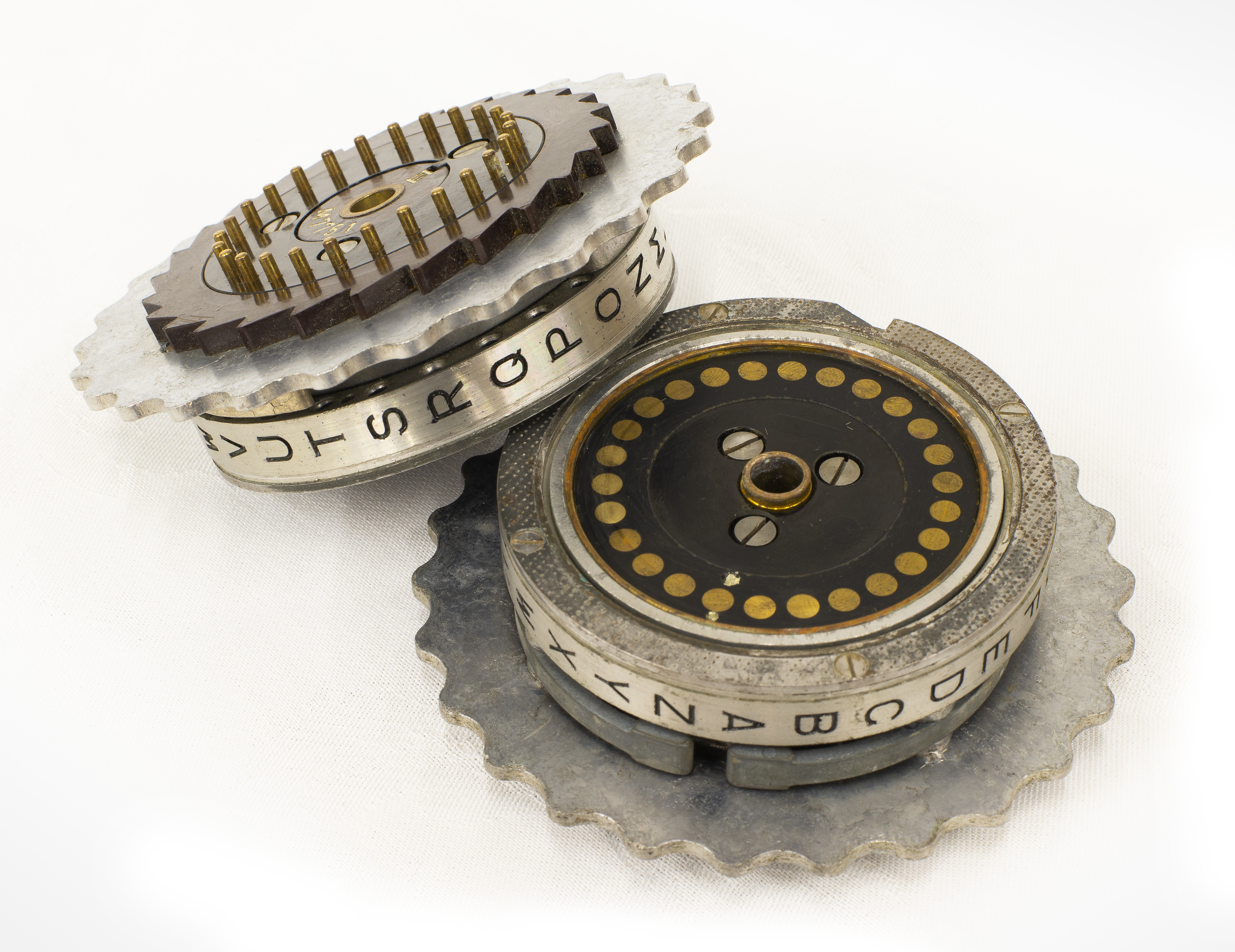
Enigma rotors have 26 contact points on each side.
To increase the cipher complexity, the setting of the rotors changes each time a key is used. The right rotor moves every time a key is pressed. The rotor next to it steps forward once the first rotor has gone all the way around. The next rotor moves forward when the second one has turned all 26 positions. If there is a fourth rotor, it moves after the third one.
After the rotors, the current travels through a reflector, which sends it back through the rotors and the plugboard. The scrambled letter lights up on the lamp board. Operators encrypted messages this way, letter by letter.
In Cipher | Decipher, we use a computer interactive to demonstrate how the Enigma works. We slowed down the process so visitors can follow the electric current moving through the Enigma, scrambling the letter as it goes.
Since there is also great value in seeing the real object working, the conservators and I made this short video of the Enigma in action – before installing it in its exhibit case for Cipher | Decipher.
The new exhibition — which includes a number of logic puzzles and games — has received positive feedback since its unveiling at Library and Archives Canada earlier this month. Visitors to the Canada Science and Technology Museum can see Cipher | Decipher from November 6 to 25. The exhibition will then travel to Kingston, where visitors to the Military Communications and Electronics Museum can see it from December 7, 2018 through March 31, 2019.


